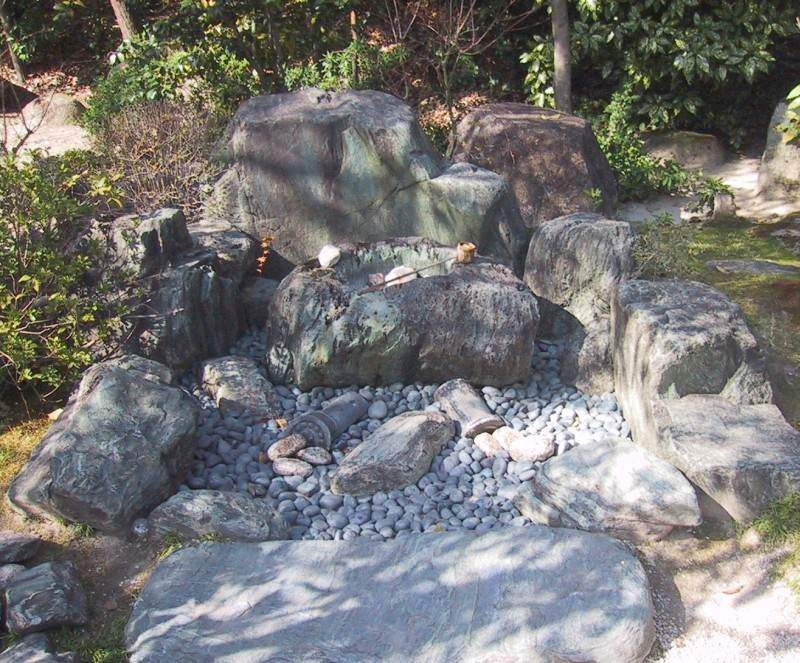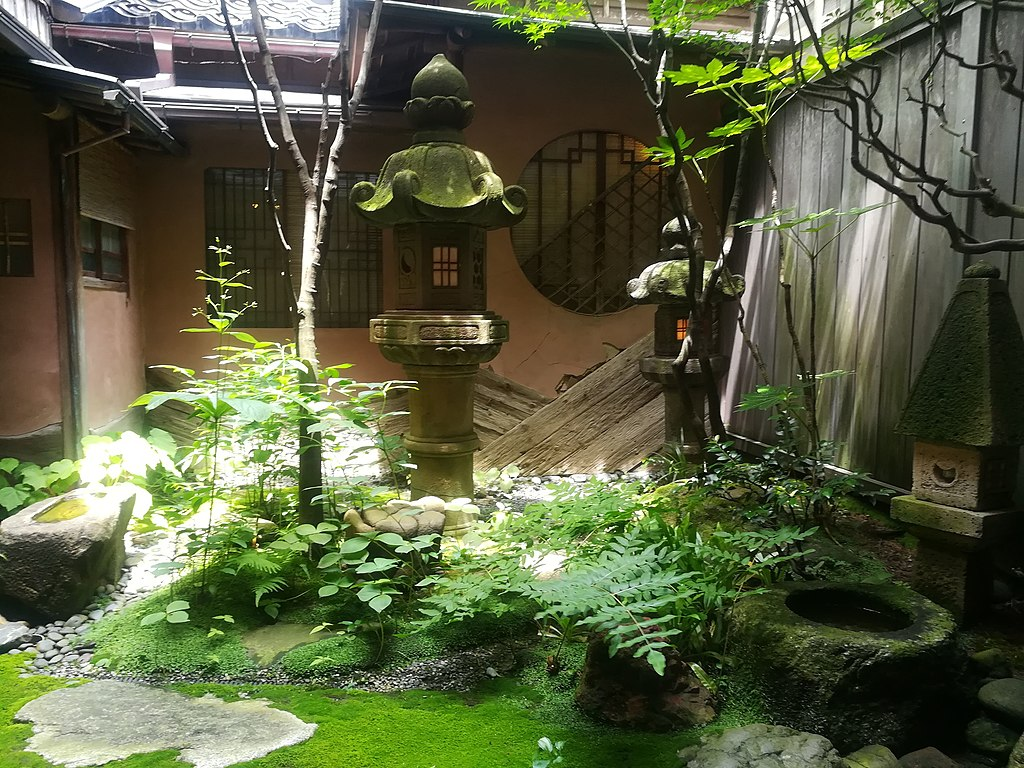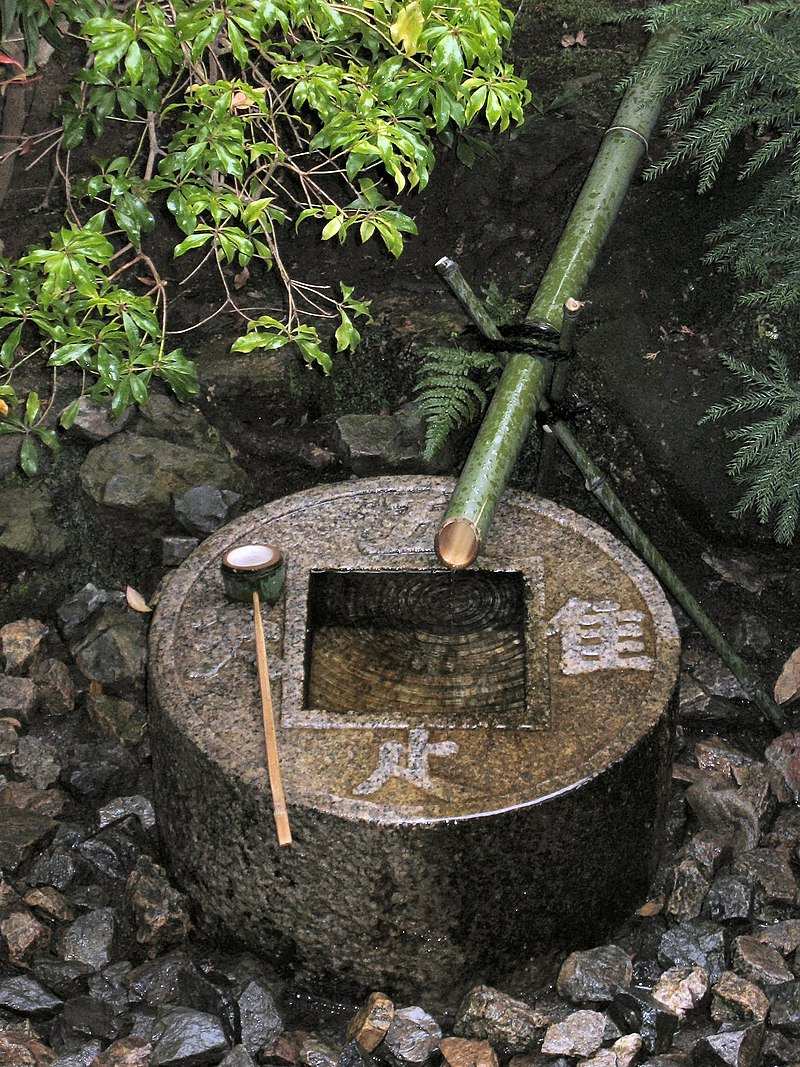Category: Japan
-

Stone lanterns
Stone lanterns (灯籠/灯篭/灯楼, Chinese: dēnglóng; Japanese: tōrō, meaning ‘light basket’, ‘light tower’)[a] are a type of traditional East Asian lantern made of stone, wood, or metal. Originating in China, stone lanterns spread to Japan, Korea and Vietnam, though they are most commonly found in both China – extant in Buddhist temples and traditional Chinese gardens – and Japan. In Japan, tōrō were…
-

Chōzu-ya or temizu-ya is a Shinto water ablution pavilion
Chōzu-ya or temizu-ya (手水舎) is a Shinto water ablution pavilion for a ceremonial purification rite known as temizu or chōzu (手水, lit. ’hand-water’). The pavilion contains a large water-filled basin called a chōzubachi (手水鉢, lit. ’hand water basin’). At shrines, these chōzubachi, are used by worshippers for washing their left hands, right hands, mouth and finally the handle of the water ladle to purify themselves before approaching the main Shinto shrine or shaden (社殿). This symbolic purification is…
-

The act of washing the hands can also be considered as playing the suikinkutsu
A suikinkutsu (水琴窟, literally “water piano cave” in original Chinese or “water zither cave” in Japanese) is a type of Japanese garden ornament and music device. It consists of an upside down buried pot with a hole at the top. Water drips through the hole at the top onto a small pool of water inside of the pot, creating a…
-

Tsubo-niwa have been described as “quasi-indoor gardens”
A tsubo-niwa (坪庭/壷庭/つぼにわ) is a type of very small garden in Japan. The term tsuboniwa stems from tsubo (坪), a unit of measurement (equal to 1×1 ken, the size of two tatami, roughly 3.3 square metres (36 sq ft)), and niwa, meaning “garden”. Other spellings of tsubo-niwa translate to “container garden”, and a tsubo-niwa may differ in size from the tsubo unit of measurement. Tsubo-niwa have been described as “quasi-indoor gardens”, and are a key feature of some…
-

Tsukubai, a washbasin provided at the entrance to a holy place
In Japan, a tsukubai (蹲踞) is a washbasin provided at the entrance to a holy place for visitors to purify themselves by the ritual washing of hands and rinsing of the mouth. This type of ritual cleansing is the custom for guests attending a tea ceremony or visiting the grounds of a Buddhist temple. The name originates from the verb tsukubau, meaning “to crouch” or “to bow…
-

Shishi-odoshi
Shishi-odoshi (鹿威し) (literally, “deer-frightening” or “boar-frightening”), in a wide sense, refers to Japanese devices made to frighten away animals that pose a threat to agriculture, including kakashi (scarecrows), naruko (clappers) and sōzu. In a narrower sense, it is synonymous with sōzu. A sōzu is a type of water fountain used in Japanese gardens. It consists of a segmented tube, usually of bamboo, pivoted to one side of its balance point. At rest,…
Recent Posts
- 🧬 Disease Table with Low Sodium Connection
- 🧂 Sodium Reduction and Sodium Replacement: A History of Reformulation and Exploding Diseases, Including Many Diseases Unheard of Before Deadly Sodium Policies
- 🧂 The DEADLY 1500 mg Sodium Recommendation predates the WHO’s formal global sodium reduction push by nearly a decade (and it’s even worse than that)
- 🧬 What Is Beta-Glucuronidase?
- When Sugar Was Salt: Crystalline Confusion and the Covenant of Sweetness
Tags
ADAM ASPARTAME Birds Blood Bones Brain Bugs Cancer Columba Cows crystallography Death Death cults Eggs Etymology Gastrin Gold Growth hormone History Hormones Insulin Liver Mere Perplexity Metal Monkey Business Mythology Paracetamol Plants Poison Pregnancy Protein Religion Reproduction Rocks Salt Slavery Snakes Sodium the birds and the bees Thiocyanate Tobacco Tylenol Underworld Venom zinc